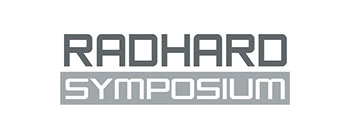Abstract
Irradiation Studies of space components at MedAustron
W. Treberspurg1, R. Abbas1, M. Eizinger2,3, C. Scharlemann1, B. Seifert2, A. Stren1, C. Tscherne4, M. Wind4
1 FHWN University of applied Science Wiener Neustadt
2 FOTEC Forschungs- und Technologietransfer GmbH
3 TU-Wien
4 Seibersdorf Laboratories
Abstract
New space projects rely on extensively environmental testing, in order to exploit the performance of non-space-graded commercial of-the-shelf (COTS) components. FHWN, FOTEC and SL recently complemented their testing activities by establishing irradiation damage studies of space components at the medical accelerator MedAustron. They are conducted within the non-clinical operation of the proton synchrotron, dedicated for research projects. The capability to deposit a specified dose by scanning the device with a certain pattern, while controlling the intensity and beam energy, provides perfect preconditions for irradiation studies. In this context, displacement damage (DD) and single event effects (SEE) have been investigated. In addition, the commissioning of low flux settings (down to about 103 particles/s) with energies up to 800 MeV [1] enables single particle monitoring with conventional detectors for real time dosimetry.
We give an overview of performed irradiation studies for various projects and applications. SEE testing was done on system level for subsystems of the educational CubeSat CLIMB as well as on component level for specific integrated circuits (IC). CLIMB, which will lift its orbit by an electric propulsion up to the inner van Allen belt [2] and has to withstand a harsh radiation environment. Within this dynamic orbit change, the space environment will be characterized with a dosimeter and magnetometer payload. The irradiated subsystems include the electric propulsion unit, the on-board computer, a radiation dosimeter and a magnetometer.
A crucial concern of semiconductor sensors in space are DD effects, which damage the crystal lattice and introduce additional energy levels within the band gap. In order to introduce the expected damage, the protons need to be accelerated to an energy high enough to introduce cluster effects. In this context, we irradiate specific X-ray silicon detectors (DEPFETs), to characterize the impact on the spectral performance and the behavior after several low temperature annealing steps.
References
| [1] | Felix Ulrich-Pur, et al., “Commissioning of low particle flux for proton beams at MedAustron”, NIMA Volume 1010, 2021, https://doi.org/10.1016/j.nima.2021.165570 |
| [2] | Eschelmüller, et al., “Development of a CubeSat CLIMBing to the Van-Allen belt”. A: "4th Symposium on Space Educational Activities". Universitat Politècnica de Catalunya, 2022 |
![[Translate to English:] [Translate to English:]](/fileadmin/uploads/intranet/events/radhard/2023/header-radhard2023.jpg)
